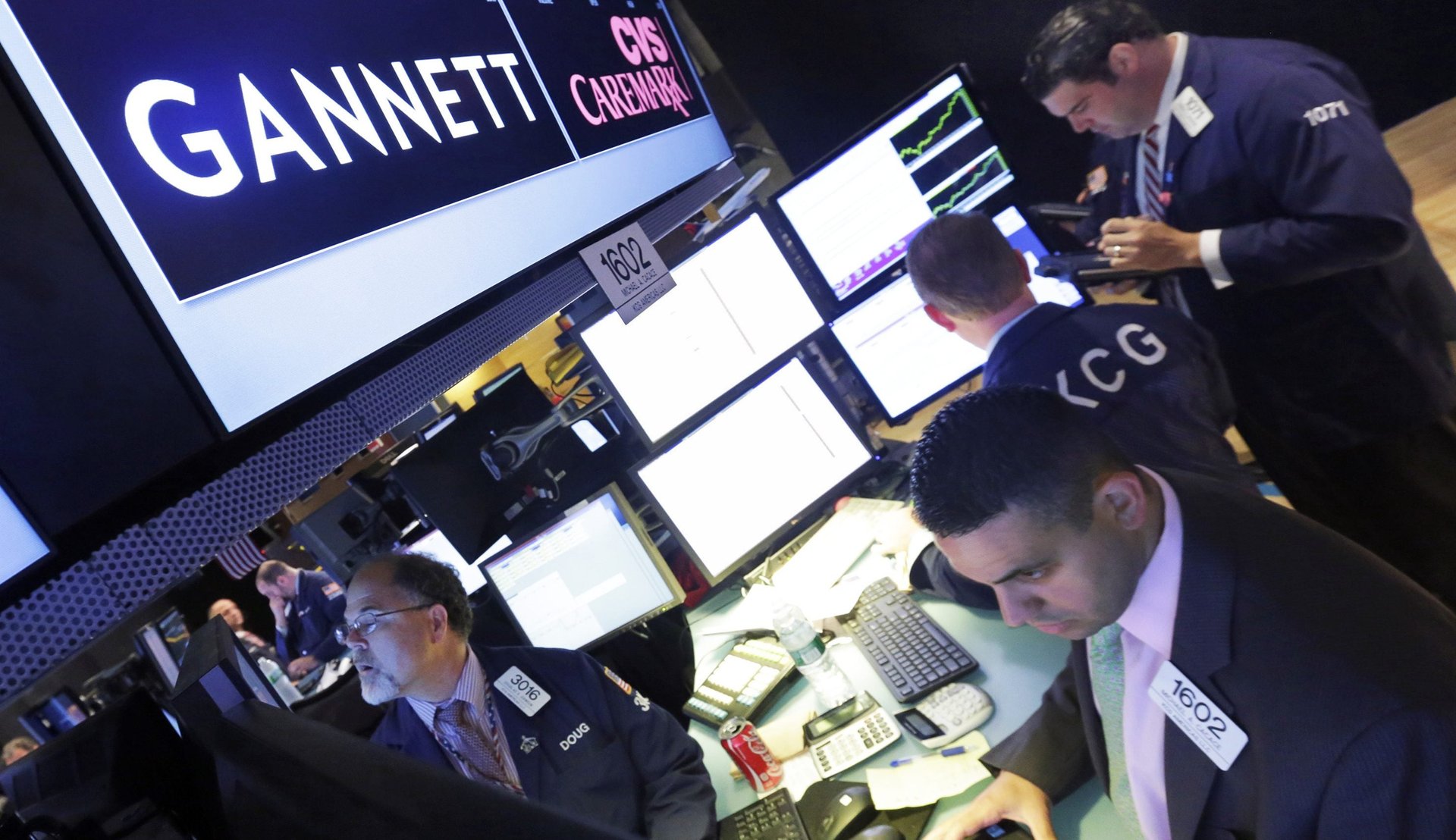With Gannett gone, it’s sink or swim for Tronc
Gannett, the publisher of USA Today, said it’s abandoning a contentious and very public six-month-long quest to take over Tronc, the Chicago-based company formerly known as Tribune Publishing. The deal fell apart days after banks involved in the acquisition reportedly pulled their funding over concerns that it was valued too highly.


Gannett, the publisher of USA Today, said it’s abandoning a contentious and very public six-month-long quest to take over Tronc, the Chicago-based company formerly known as Tribune Publishing. The deal fell apart days after banks involved in the acquisition reportedly pulled their funding over concerns that it was valued too highly.
News of the aborted bid, while not unexpected, tanked Tronc’s stock; Gannett reportedly had been prepared to pay about $18.75 a share in the acquisition, up from an initial bid of $12 a share in April. In midday trading in New York on Tuesday, Tronc shares were trading at $10.24 apiece.
Now that Gannett has pulled the life preserver away, Tronc—which owns the Los Angeles Times, Baltimore Sun, and Chicago Tribune—will have to sink or swim on its own technology-driven turnaround strategy, which is being spearheaded by the company’s tech-entrepreneur executive chairman Michael Ferro Jr.
Eager to revamp the newspaper industry for the digital age, Ferro bought a $44 million stake in Tribune Publishing in February, through his investment firm Merrick Media. In June, he rebranded the company as Tronc, short for Tribune Online Content, and moved its stock listing from the New York Stock Exchange to NASDAQ, positioning itself more as a tech startup than the legacy newspaper publisher it is.
The new brand’s introductory video and accompanying announcement, both of which were bereft of the word “newspaper,” were roundly criticized for their corporatespeak about plans to “harness the power of our local journalism,” “feed it into a funnel,” and “optimize it.” Tronc also boasted using artificial intelligence and machine learning “to maximize all the time.”
Tribune Publishing, now Tronc, rejected Gannett’s first two takeover bids—the offer for $12.25 a share in April and another for $15 per share in May—which would have helped Gannett expand USA Today in new geographic markets.
Tronc rejected Gannett’s first offer because it was convinced that ”the execution of our standalone strategic plan will generate shareholder value in excess of Gannett’s proposal,” CEO Justin Dearborn said in May. But Ferro and the board later acquiesced to Gannett’s advances, amid pressure from other investors who had reportedly been urging them sell.
Unless another potential suitor steps up, we’ll now see whether Tronc’s digital-focused strategic plan will be enough to keep the company afloat.